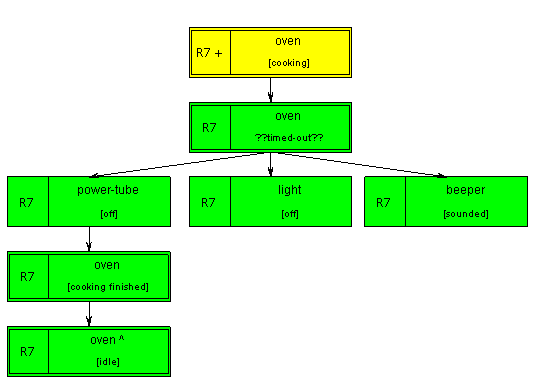Behavior Engineering Based Software Change Case Studies
Background
. Behavior Engineering
. Software Change
. Software Tools
. Microwave Oven Case Study
. Satellite Control System
Mircowave Oven Case Study
Version 1
. Requirements and RBT
. The DBT
. Other Design Diagrams
Version 2 and 3
. Version 2
. Version 3
Evolutionary Diagrams
. EVDBT for version 1,2 and 3
. Other Evolutionary Diagrams
Satellite Control System
Requirements and RBTs
. Requirement 2.1
. Requirement 2.2
. Requirement 2.2.1
. Requirement 2.2.2
. Requirement 2.2.3
. Requirement 2.3
. Requirement 2.3.1
. Requirement 2.3.2
. Requirement 2.3.3
. Requirement 2.3.4
. Requirement 2.3.5
. Design Behavior Tree
Other Versions
. Version 2 Requirement 2.2.3
. DBT for Version 2
. Version 3 Requirement 2.1
. DBT for Version 3
. Version 4 Requirement 2.2.2
. DBT for Version 4
. Version 5 Requirement 2.3.4
. DBT for Version 5
. The Evolutionary DBT
Microwave Oven Case Study RBTs
The requirement behavior trees of the Microwave Oven case study is listed:
• R1 : There is a single control button available for the user of the oven. If the oven is idle with the door is closed and you push the button, the oven will start cooking (that is, energize the power-tube for one minute).
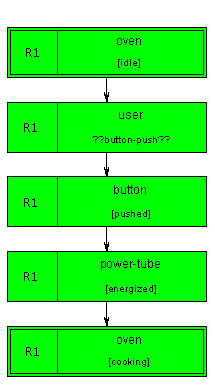
• R2 : If the button is pushed while the oven
is cooking it will cause the oven to cook for an extra minute.
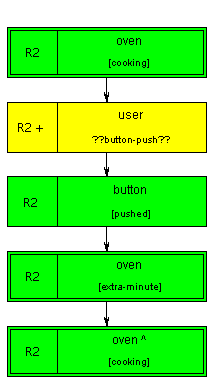
• R3 : Pushing the button when the door is open has no effect (because it is disabled).

• R4 : Whenever the oven is cooking or the door is open the light in the oven will be on.

• R5 : Opening the door stops the cooking.
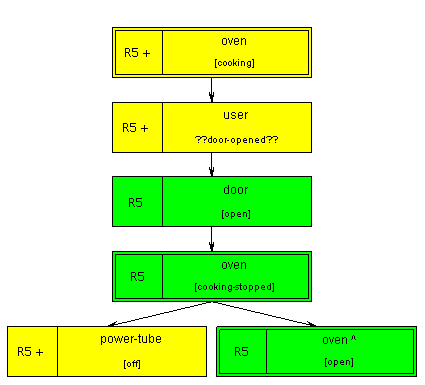
• R6 : Closing the door turns off the light. This is the normal idle state, prior to cooking when the user has placed food in the oven.
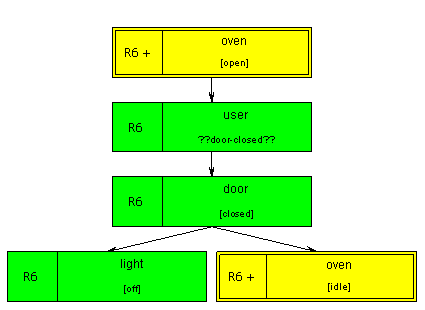
• R7 : If the oven times-out the light and the power-tube are turned off and then a beeper emits a sound to indicate that the cooking is finished
